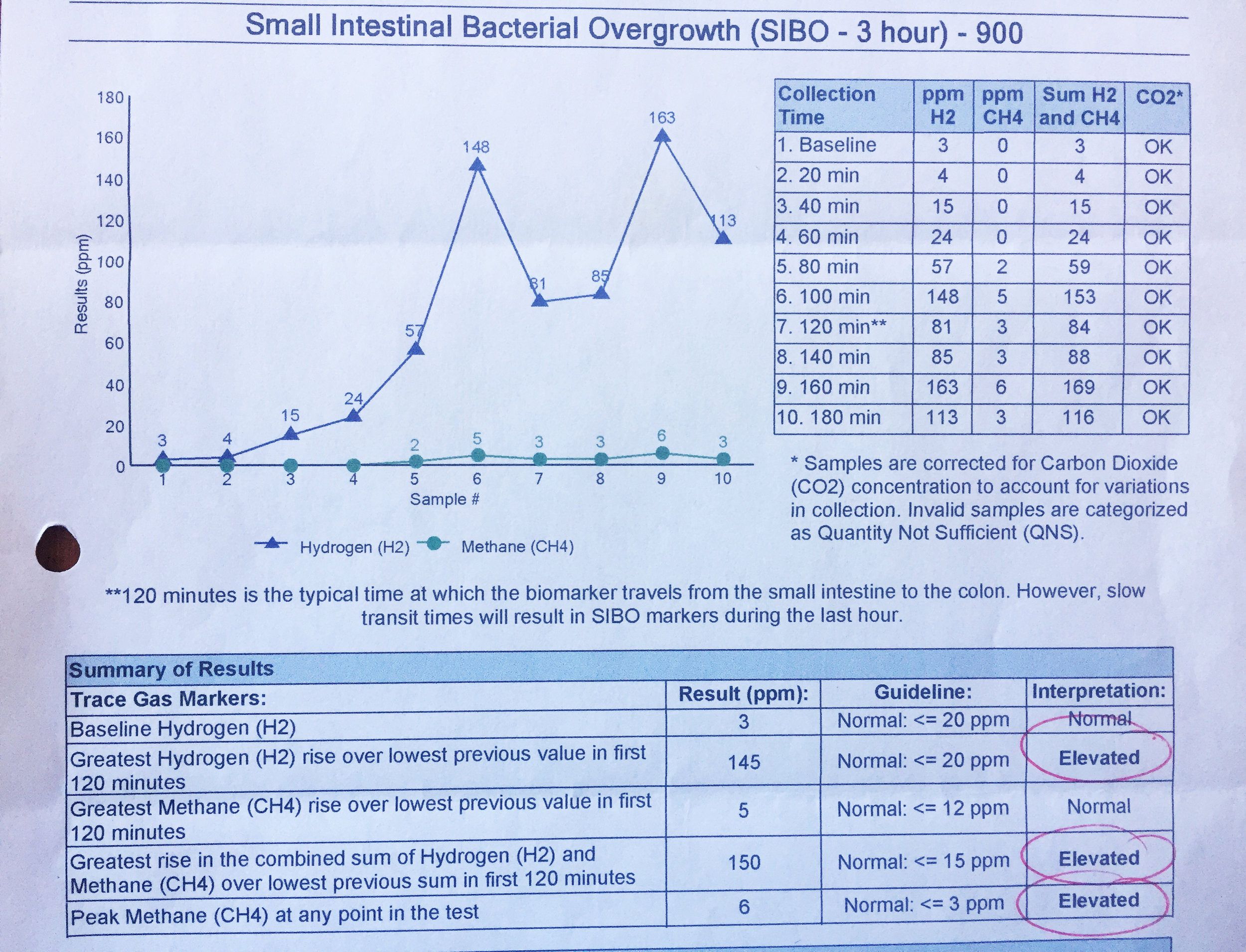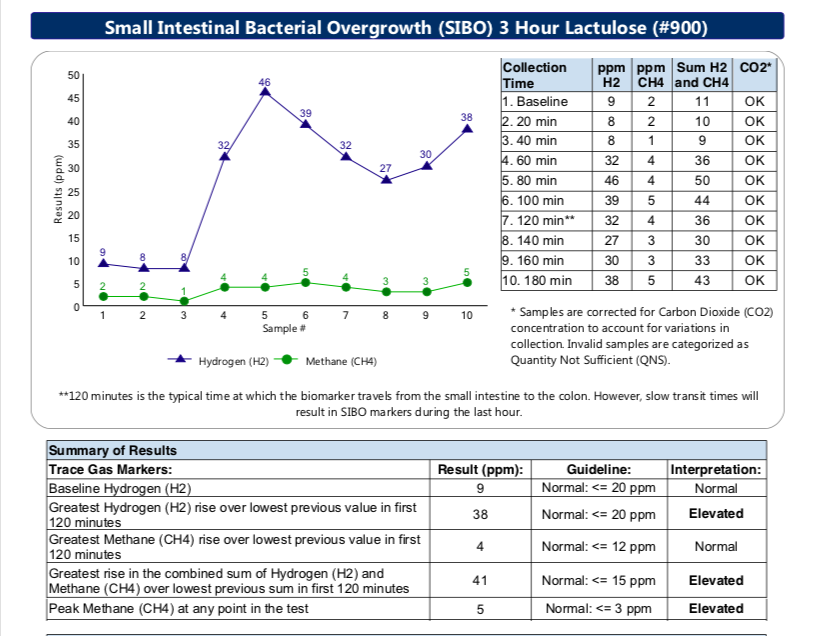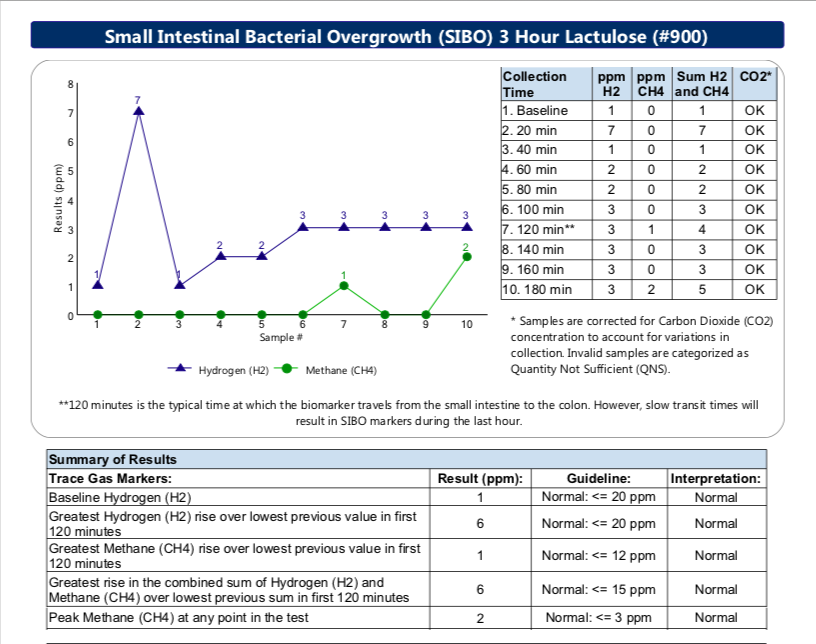
What is SIBO? Part 2: SIBO Testing
SIBO. Small intestine bacterial overgrowth. That menace of a condition which can cause so many uncomfortable, embarrassing and potentially very harmful effects. In this article I talked about what SIBO is, common causes, and symptoms.
Obvious digestive symptoms include constipation, diarrhea, a combination of constipation and diarrhea, nutrient deficiencies, abdominal pain, bloating, and flatulence. Not so obvious symptoms include joint pain, skin rashes, eczema, rosacea, allergies, and brain fog, among others.
So, do you think you may have SIBO? What to do next? This was exactly the position I found myself in a few months into my healing journey. I asked my general practitioner about testing for SIBO and was told such a test was not available through conventional medicine. This marked the point in my journey where I found a functional medicine practitioner.
The most common test for SIBO right now is a breath test. This test can be performed at home or in a clinical setting. For 24 hours prior to the test, the patient eats a restricted diet with essentially no carbohydrates. This starves the gut bacteria, which normally feed on carbohydrates, making them very hungry.
At the start of the test, the patient breathes into a glass test tube to collect a baseline breath sample. Then, the patient drinks a provided lactulose (most common) or glucose solution. Every 20 minutes for a three hour period the patient breathes into a new test tube for a total of 10 breath samples.
As the starved bacteria munch on the sugary solution, they release gas which is absorbed in our bloodstream and taken to the lungs to be expelled. Here is a link to a video demonstration from one testing lab.
The test tubes are sent to the testing lab to evaluate the methane and hydrogen content in the breath samples. The amount of hydrogen and methane gives a picture of the amount and type of bacteria present, and the timing helps identify where the bacteria are located in the digestive tract. The lab can also identify the best natural anti-fungal agents to treat the bacteria.
I did the breath test three times in my own home. The collected breath samples went to the lab, and I met with my functional medicine practitioner to go over the results. Here are my three test results.

First SIBO Breath Test Results: Severe case of SIBO

Six Months Later, Second SIBO Breath Test Results: Mild SIBO

Two Months Later, Third SIBO Breath Test Result: No SIBO.
The first time I did the test, it showed I had a very high hydrogen-dominant bacterial overgrowth in the lower part of my small intestine. After six months of herbal anti-microbial treatments, the bacterial overgrowth was mild. I continued for another two months of anti-microbial treatment combined with a low FODMAP diet and finally the results showed normal bacterial levels.
Having test results gave me a lot of confidence in knowing what was going on in my gut, especially since I didn’t have the gastrointestinal symptoms that are common for SIBO. Continuing with the testing until a negative result also gave me confidence that the treatment process was working.
The downside of SIBO testing is the expense. The test itself was about $300 per test, and combined with consultations with my functional medicine practitioner to go over results, the cost was well over $1000. The only cost partially covered by my health insurance was my doctor visits. Although it was expensive, for me, it was worth the costs to know exactly what I was dealing with and the effectiveness of the treatment protocol.
An alternative to the SIBO breath test is to evaluate symptoms in response to certain carbohydrate foods. If symptoms increase with these foods, then the assumption would be that SIBO is present and proceed with herbal treatments and monitor results. Even with this approach I recommend working with a practitioner experienced in treating SIBO.
SIBO is such a common disorder that I hope the SIBO breath test will one day be available through your family doctor. SIBO responds well to treatment, but diagnosis is the first step.
My next article is about food plans to help treat SIBO. Meanwhile, I hope you found this article about how to test for SIBO useful and informative. If you have any questions about SIBO, please comment below or send me a message.
Get started with lowering pain and inflammation with my free Relief with Peace Audio Bundle

